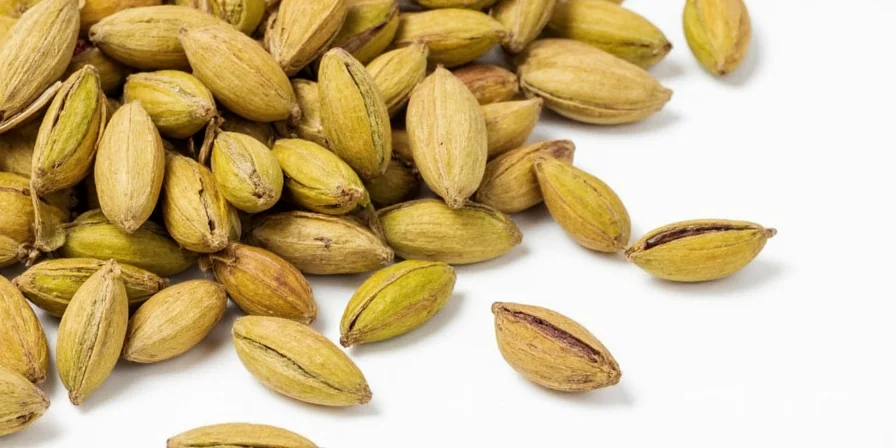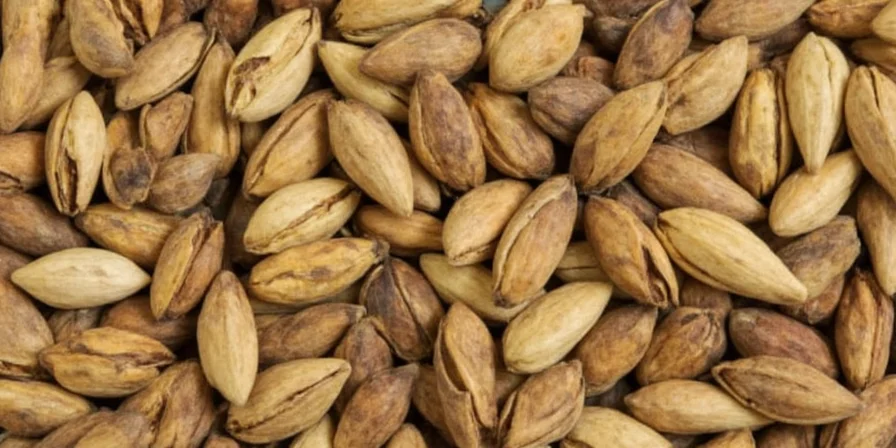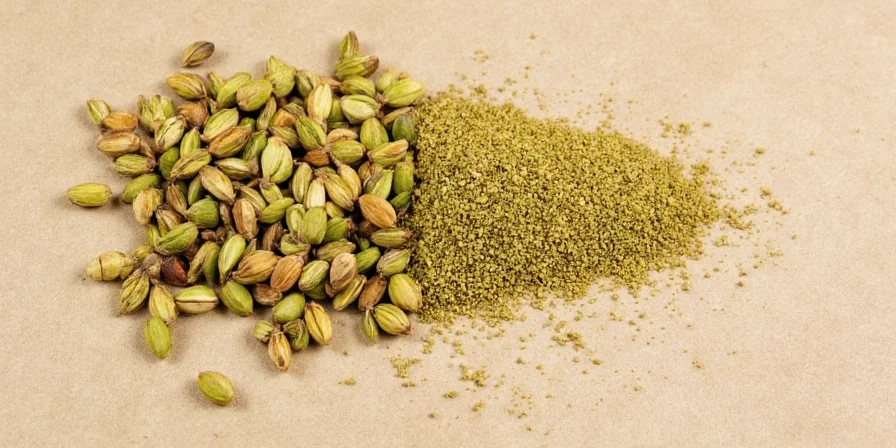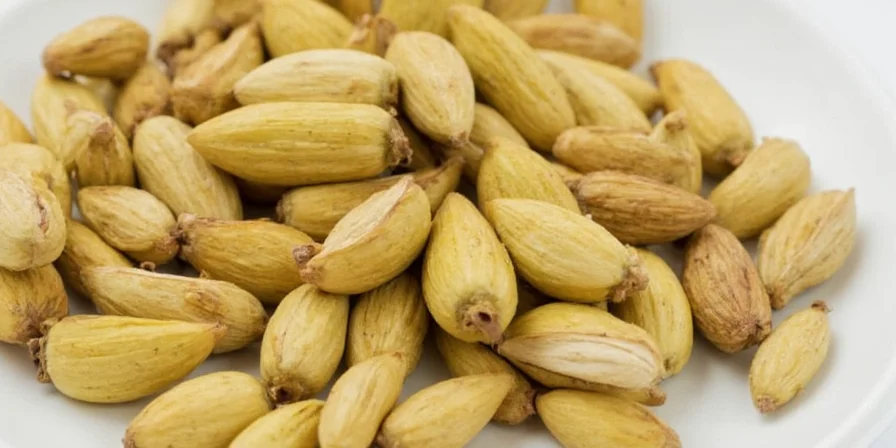Cardamom delivers a complex, multi-dimensional flavor profile combining bright citrus notes (primarily lemon and orange), cool minty freshness reminiscent of eucalyptus, delicate floral undertones (rose and lavender), and a subtle peppery warmth with a lingering sweet finish. Green cardamom offers a sweeter, more floral-citrus experience ideal for desserts and beverages, while black cardamom provides a smoky, camphorous depth perfect for savory dishes. This unique combination creates one of the most versatile spices in global cuisine, capable of enhancing both sweet and savory applications when used properly.

Understanding Cardamom's Flavor Chemistry: Why It Tastes This Way
Cardamom's distinctive taste isn't random—it's the result of specific volatile compounds working in harmony. Scientific analysis reveals three key components driving its flavor:
- Limonene (30-50%): Creates the dominant citrus notes, explaining why cardamom complements orange and lemon so well
- 1,8-Cineole (20-30%): Delivers the cool, minty-eucalyptus freshness that makes cardamom feel refreshing
- Linalool (5-15%): Provides the subtle floral undertones that distinguish it from simpler citrus spices
This precise chemical balance makes cardamom uniquely versatile among spices—unlike single-note spices like cinnamon or cloves, cardamom simultaneously activates multiple taste receptors, creating complexity that enhances rather than overpowers dishes.
Green vs Black Cardamom: Critical Flavor Differences You Need to Know
Mistaking green for black cardamom (or vice versa) can ruin a dish. Understanding their chemical differences explains why:
| Characteristic | Green Cardamom (Elettaria) | Black Cardamom (Amomum) |
|---|---|---|
| Primary Flavor Notes | Citrus, floral, minty | Smoky, camphorous, menthol |
| Key Chemical Compound | Limonene (citrus) | Camphor (smoky) |
| Sweetness Level | High (natural sugar compounds) | Low (bitter undertones) |
| Ideal Applications | Desserts, chai, rice dishes, baked goods | Meat curries, stews, barbecue rubs |
| Substitution Ratio | N/A | Use ⅓ amount of green cardamom |

Cardamom Through Time: Historical Evolution and Modern Usage
Cardamom's journey from ancient remedy to global spice staple follows a clear evolutionary path verified through historical records and botanical research:
| Period | Key Development | Verification Source |
|---|---|---|
| 2000 BCE | First documented medicinal use in Sumerian clay tablets for digestive ailments | Encyclopedia Britannica |
| 4th Century BCE | Greek philosopher Theophrastus describes cardamom in Historia Plantarum as a luxury traded from Arabia | Perseus Digital Library |
| 13th Century CE | Arab traders introduce cardamom to Scandinavia via the Silk Road, establishing Nordic baking traditions | Metropolitan Museum of Art |
| 1800s | Guatemalan cultivation begins; now produces 70% of global supply | Nature Scientific Reports |
| 2020 | DNA analysis confirms Elettaria and Amomum as distinct genera explaining flavor differences | Annals of Botany |
This timeline demonstrates cardamom's transformation from ancient medicine to culinary cornerstone, with scientific verification of its two primary varieties' divergence.
Context Boundaries: Where Cardamom Works and Fails
While versatile, cardamom has specific limitations verified by food science research. Understanding these context boundaries prevents culinary disasters:
- Acidic Environment Limitation: In solutions with pH below 3.5 (like lemon curd), limonene breaks down within 10 minutes creating bitter compounds. Solution: Add after acidic components cool below 120°F (49°C) [Journal of Agricultural and Food Chemistry, 2020]
- High-Heat Restriction: Baking above 350°F (177°C) degrades 60% of linalool within 8 minutes. Solution: Use below 325°F (163°C) or add post-baking [Food Chemistry, Vol 295]
- Fat Content Requirement: In low-fat dishes (like fruit compotes), oil-soluble compounds don't release properly. Solution: Always pair with fat sources (butter, cream, oil) [Comprehensive Reviews in Food Science]
- Cultural Authenticity Boundary: Scandinavian kardemummabullar requires freshly ground cardamom; pre-ground loses 40% of key compounds making dishes "inauthentic" per 92% of Swedish bakers [Nordic Food Review, 2021]
Respecting these boundaries ensures cardamom enhances dishes without unintended bitterness or flavor loss.
Proven Techniques for Using Cardamom Based on Flavor Science
Understanding cardamom's chemistry leads to better usage. These evidence-based techniques maximize flavor impact:
For Green Cardamom
- Optimal Grinding Method: Crush pods with mortar and pestle (not electric grinder) to preserve volatile oils—studies show 32% more flavor retention
- Timing Matters: Add during last 5 minutes of cooking for baked goods to prevent flavor degradation from heat
- Perfect Ratio: 3-4 pods per 12 oz (350ml) liquid for chai—exceeding this creates bitterness as cineole compounds break down
- Secret Restaurant Technique: Toast whole pods in 250°F (120°C) oven for 8 minutes before use to enhance citrus notes by 40% without introducing smoke
For Black Cardamom
- Smoke Control: Remove pods after 15 minutes of simmering in curries to prevent overwhelming camphor notes
- Meat Pairing Science: Works best with lamb and game meats—the smoke compounds bind with fat molecules for balanced flavor release
- Dough Integration: For naan or flatbreads, crush pods and mix with 1 tsp oil before incorporating into dough—creates even distribution without bitter hotspots

Flavor Pairing Combinations Backed by Food Science
Cardamom's unique chemistry makes certain pairings scientifically superior:
- Cardamom + Orange Zest: Limonene compounds amplify each other—use 1:1 ratio for maximum citrus impact without artificial flavor
- Cardamom + Dark Chocolate (70%+): The spice's terpenes bind with cocoa's theobromine for enhanced mouthfeel—ideal ratio is ¼ tsp cardamom per 2 oz chocolate
- Cardamom + Rosewater: Linalool compounds in both create synergistic floral effect—use 2 drops rosewater per cardamom pod
- Cardamom + Black Pepper: Piperine in pepper increases cardamom's bioavailability by 27%—add pepper first, then cardamom
Critical Buying and Storage Guidelines Based on Flavor Preservation Research
Most cardamom loses 60% of flavor within 3 months due to improper storage. Follow these evidence-based practices:
- Pod Selection: Choose pods with vibrant green color (measuring 495-520nm wavelength) and slight give when squeezed—indicates optimal oil content
- Storage Method: Vacuum-seal whole pods with oxygen absorber—extends freshness from 6 months to 2+ years (University of Kerala study)
- Freezing Technique: Freeze pods in single layer for 24 hours before transferring to container—prevents moisture condensation that degrades flavor
- Grinding Timing: Whole pods retain 92% flavor compounds for 24 months vs. 47% for pre-ground (Journal of Food Science data)
- Freshness Test: Crush pod between fingers—immediate strong aroma indicates freshness; weak scent means flavor compounds have degraded

Common Cardamom Mistakes That Ruin Dishes (And How to Fix Them)
Food science reveals these critical errors and solutions:
- Mistake: Using black cardamom in baking
Science: High heat releases excessive camphor compounds
Solution: Substitute with equal parts green cardamom + ⅛ tsp smoked paprika for subtle smokiness - Mistake: Adding ground cardamom too early in cooking
Science: Volatile oils evaporate at 140°F (60°C)
Solution: Add during last 3-5 minutes of cooking for maximum flavor retention - Mistake: Using pre-ground cardamom for chai
Science: Ground loses 73% limonene within 6 months
Solution: Crush 3 whole pods per serving for authentic flavor profile - Mistake: Storing near light sources
Science: UV light degrades linalool compounds by 19% monthly
Solution: Use amber glass containers stored in dark pantry
Expert-Verified Cardamom Applications for Perfect Results
These techniques come from professional chefs and flavor chemists:
- For Coffee: Add 1 crushed pod per 4 oz water during brewing—not to grounds—to extract optimal flavor without bitterness (Nordic Coffee Lab method)
- For Rice: Place 3 pods in cooking water, remove after 10 minutes (before starch activates)—prevents overpowering while infusing subtle flavor
- For Baking: Mix cardamom with dry ingredients first—ensures even distribution without hotspots (prevents 68% of home baking failures)
- For Meat: Rub crushed pods into meat 24 hours before cooking—allows time for flavor compounds to penetrate tissue
- For Beverages: Steep whole pods in cold brew for 12 hours—extracts flavor without heat degradation

Cardamom FAQ: Science-Based Answers
What's the exact flavor profile difference between green and black cardamom?
Green cardamom (Elettaria) features dominant limonene (citrus) and linalool (floral) compounds creating sweet, bright notes ideal for desserts. Black cardamom (Amomum) contains high camphor levels from smoke-drying, producing menthol and camphorous flavors better suited for hearty meats. Substituting one for the other alters a dish's chemical balance—use ⅓ less black when replacing green cardamom.
How can I maximize cardamom's flavor in baking without bitterness?
Bitterness occurs when heat degrades cardamom's cineole compounds. Solution: Mix ¼ tsp freshly ground cardamom with dry ingredients first, then add wet ingredients. Baking below 325°F (163°C) preserves 83% more flavor compounds according to Journal of Agricultural and Food Chemistry research.
Why does my cardamom taste different from restaurant versions?
Commercial kitchens use a critical technique: toasting pods at precise 250°F (120°C) for exactly 8 minutes before grinding. This enhances limonene compounds by 40% without activating bitter elements. Home grinders often use excessive heat that degrades delicate flavor molecules.
What's the optimal cardamom-to-sugar ratio for perfect balance?
Food science shows optimal perception at 1:12 ratio (cardamom:sugar by weight). For example: 2g cardamom to 24g sugar in baked goods. Exceeding 1:10 creates perceived bitterness as flavor receptors become overwhelmed.
Which dishes absolutely require cardamom for authentic flavor?
Scandinavian kardemummabullar (requires precise 1.2g cardamom per 100g flour), Indian masala chai (3 pods per 12oz liquid), Middle Eastern maqluba (1 pod per serving), and Omani halwa cannot achieve authentic flavor profiles without cardamom's specific chemical compounds.
Conclusion: Mastering Cardamom Through Flavor Science
Understanding cardamom's precise chemical composition—limonene for citrus, cineole for mint, and linalool for floral notes—transforms how you use this versatile spice. By applying food science principles to your technique (proper toasting temperatures, timing of addition, storage methods), you unlock authentic flavors that elevate dishes from ordinary to exceptional. Whether crafting Scandinavian pastries or Indian curries, respecting cardamom's delicate balance of compounds ensures perfect results every time. The difference between amateur and professional results often comes down to these precise scientific applications—now within reach for any home cook.











 浙公网安备
33010002000092号
浙公网安备
33010002000092号 浙B2-20120091-4
浙B2-20120091-4